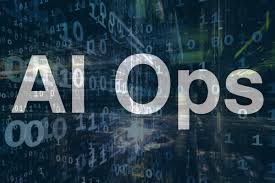
Continuous availability is critical to almost all applications in 2022, but many are still operating without AIOps to prevent disruption and outages.
In the early days of the World Wide Web, websites would routinely go offline at night to save on server costs. What was once standard practice for most small business owners is unfathomable nowadays, at a time when lots of businesses are aiming for continuous availability, with even an hour of downtime considered a disaster.
As the web has grown, so have threats to websites and applications. Server disruption, malicious attacks and internal errors can all prevent continuous availability, which, if not identified before, can take an application offline for hours if not days.
See Also: The Role of AIOps in Continuous Availability
One way to ensure continuous availability is through the use of AIOps, an essential layer for any digital organization that needs to be operational 24/7. However, many vendors are still unsure about investing in tools to ensure that their applications or websites remain online at all times.

AIOps is the deployment of machine learning to track data from sensors, traces, logs and other sources to prevent internal and external disruption, whether that be through event correlation or anomaly detection. It can also provide better analysis of why an event happened, through casualty determination.
“Advanced AIOps platforms converge all data — metrics, traces, logs, changes, and events — for rapid, accurate reporting and analysis,” said Scott Kelly, director of product marketing at Moogsoft. “Unlike old, rules-based technologies, this method can operate on partial evidence and detect problems before they become critical. AIOps also uses ML to dissect incidents, understanding how to catch problems earlier in the incident lifecycle and identifying patterns that drive continuous availability.”
Given the complexity of your average digital organization in 2022, with layers of microservices and ephemeral architectures, the necessity for AIOps deployment is even more critical than it was a decade ago, when the term was first coined by Gartner.
The online world has also become far more wired to everything being available all the time. Downtime, even for a few hours, can cause customers and users to consider switching platforms, and consistent downtime can damage an application’s reputation quickly.
For critical infrastructure, downtime can also lead to expensive fines and potential loss of contracts. In cases where the public were at risk, this could lead to an organization facing charges of negligence.
Downtime, either through server issues or cyberthreats, can also harm an organization internally through reduced productivity and security fears. An organization that gains a reputation for poor operations management may also see itself struggle to acquire the best talent.







